L'enseignement : l'art du possible
 Le possible n’est pas loin du nécessaire. (Pythagore)
Le possible n’est pas loin du nécessaire. (Pythagore)
Comme les chefs d’orchestre, les meilleurs enseignants ne sont pas ceux qui manient la baguette, mais qui conduisent au surpassement. En éducation, pour prolonger l’envol, on parlera plutôt de transformation. On y arrive en faisant vibrer les émotions, et tout devient possible en caressant les bonnes cordes. Benjamin Zander, chef de l’Orchestre philharmonique de Boston, est aussi un fameux motivateur. Au sujet de l’autorité, par exemple, il observe que l’on peut imposer une volonté au corps, mais non au coeur. Dans The Art of Possibility, écrit avec son épouse, on trouve un bouquet de préceptes dont tout enseignant devrait s’inspirer.
À défaut de se procurer le livre, on se rabattra sur le compte rendu de Garr Reynolds (Presentation Zen : Ben Zander on performance and transformation). Je retiens surtout les passages suivants :
- You have to take a risk [...] Only through mistakes can we see where we’re lacking, where we need to work.
- It’s not (always) about success/failure, it’s about contribution [...] Rather than getting bogged down in a sea of measurement where you compare yourself to others and worry about whether you are worthy to be making the presentation or whether someone else could be doing it better, instead realize that at this moment in time right here right now you are the gift and your message is the contribution. There is no « better, » there is only now. (Est-ce que j’entends socioconstructivisme’?)
- The real power is in making others powerful [...] In presenting and certainly in teaching we need to make certain that the audience is engaged so that they may, with our help, find for themselves what is there to be discovered, including the discovery of the possibilities that may be within them.
- Don’t take yourself so goddamn seriously! [...] The goal, then, is to move away from the calculating self, the self that lives in a world of scarcity, exaggerated threats, and deficiencies, and move toward a healthier attitude of sufficiency, wholeness, and possibilities.
- Give way to your passion [...] There is a vitality, a life force, an energy, a quickening that is translated through you into action, and because there is only one of you in all of time, this expression is unique. And if you block it, it will never exist through any other medium and it will be lost. (Martha Graham)
Pour prendre la mesure de l’homme, voyez le vidéoclip ci-dessous (c’est un crescendo; soyez patient), ou cet autre reportage d’une présentation faite à Toronto.
C’est l’antithèse de l’enseignement conditionné, lequel mène généralement au laxisme. À ce sujet, Christian Jacominio a publié un excellent billet sur la situation qui prévaut en France (c-jacomino : Contrainte et laxisme dans le système éducatif).
Contrainte et laxisme se conditionnent l’un l’autre. La contrainte s’accepte d’autant mieux que les infractions ne sont pas sanctionnées. Elle incite à la négligence et la paresse. Au conformisme. Et, en fin de compte, au mépris des élèves dont on se plaindra qu’ils ne sont pas au niveau.
(Image thématique : Considering All Possible Worlds #1, par Cleve Gray)
Par ricochet :
Vivement la créativité !
En apprentissage, l’émotion l’emporte sur la raison
L’école devrait être un Cirque
Vous pouvez suivre les commentaires en réponse à ce billet avec le RSS 2.0 Vous pouvez laisser une réponse, ou trackback.
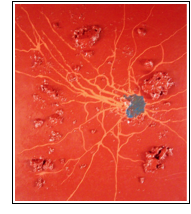
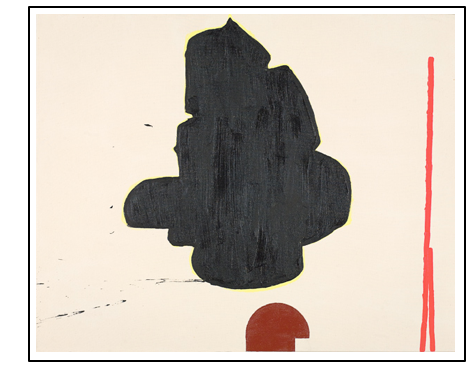


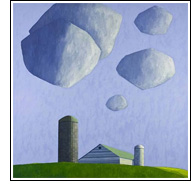
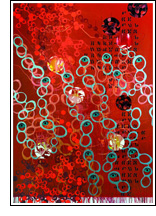
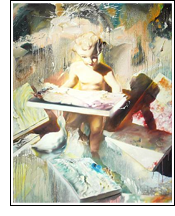
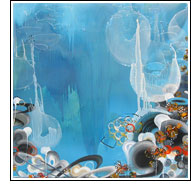

Inspirant! Une bouffée d’air fraîche en « ces temps-ci »…
On fait du travail sérieux, mais faut pas se prendre au sérieux, qu’y disaient!
En plein ça… le printemps arrive toujours à l’automne de l’année scolaire.
L’enseignement est aussi connu comme étant l’art du « faire faire » et ce n’est pas aussi facile que cela Et puis après tout le temps où l’on menait une classe à la baguette est bien révolu
Et puis après tout le temps où l’on menait une classe à la baguette est bien révolu  mais pas celui d’amener les élèves à développer toutes leurs compétences.
mais pas celui d’amener les élèves à développer toutes leurs compétences.
Brigitte, je ne suis pas certain d’aimer la notion de faire faire en éducation. Je trouve le faire plus porteur de sens. L’expression faire faire peut aussi sous-entendre l’autorité du maître sur l’élève, alors qu’on préfère amener l’élève à mettre en oeuvre ses propres stratégies d’introspection et de résolution de problèmes. À votre dernière phrase, je constate que nous préconisons les mêmes avenues.
Je viens de faire ma petite critique de l’enseignement robinet-bidon sur http://amourpiegale3.blogspot.com/2007/06/la-dualit-robinet-bidon.html
Et dans ma révolte, je termine ainsi ce post « Sus à l’école obligatoire et à ses connards d’enseignants qui vont de paire. Il n’y a rien à attendre d’une masse d’abrutis qui a admis la contrainte comme base de l’exercice de leur fonction étatique. Ils se plaignent d’un manque de liberté dans l’exercice de leur fonction. Ils ne méritent rien car ils ont fait le choix de prolonger un système carcéral. »
La critique, quoique justifiée, est décidément trop sévère. Abandonner le navire ne l’empêchera pas de poursuivre sa route. On trouve des matelots dans tous les ports. Certains ont choisi, plutôt que la fuite, de travailler à améliorer l’école de l’intérieur. C’est, je crois, très méritoire.